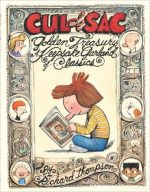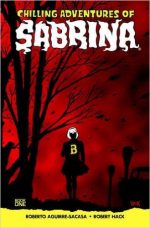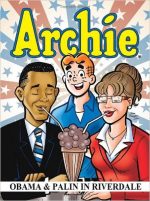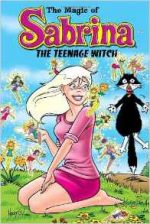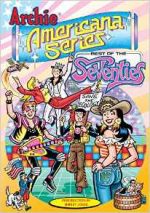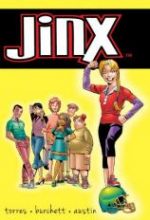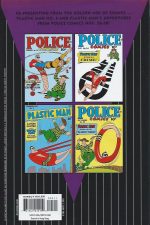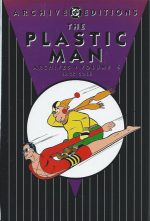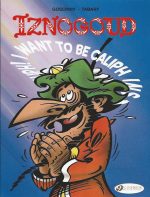
By Goscinny & Tabary, translated by Jerome Saincantin (Cinebook)
ISBN: 978-1-84918-260-7
For the greater part of his far-too-short lifetime René Goscinny (1926-1977) was one of the world’s most prolific and widely-read writers of comic strips. He still is.
Amongst his most popular and enduring comic collaborations are Lucky Luke, Le Petit Nicolas, Signor Spaghetti and, of course, Asterix the Gaul, but there were so many others, such as the despicably dark deeds of a dastardly usurper whose dreams of diabolical domination perpetually proved to be ultimately no more than castles in the sand…
In the rueful aftermath of the Suez crisis, the French returned Рby way of comics, at least Рto the hotly contested Arabian deserts as Goscinny teamed with hugely gifted Swedish ̩migr̩ Jean Tabary (1930-2011) Рwho numbered Richard et Charlie, Grabadu et Gabaliouchtou, Totoche, Corinne et Jeannot and Valentin le Vagabond amongst his previous hit strips Рto deliriously detail the innocuous history of imbecilic Arabian (im)potentate Haroun el-Poussah.
However, as is so often the case, it was the strip’s villainous foil – power-hungry vizier Iznogoud – who totally stole the show… possibly the conniving little rogue’s only successful coup.
The first kernel of inspiration came as a piece of background shtick in early 1960s kids’ cartoon book Les Vacances du Petit Nicholas (which we Brits all saw as Nicholas on Holiday). A fuller formation and development came with Les Aventures du Calife Haroun el Poussah, created for Record: debuting in the January 15th issue of 1962.
A petite hit, the feature subsequently jumped ship to Pilote – a new comic created and edited by Goscinny – where it was artfully refashioned into a starring vehicle for the unpleasant little upstart who had been hogging all the laughs and limelight.
The Vile Vizier went from strength to strength. According to the brief introduction in this volume, the unwieldy catchphrase “I want to be Caliph instead of the Caliph!†quickly became part of casual French idiom and, in October 1974, the wee rascal won his own socio-political commentary column in newspaper Journal du Dimanche.
Insidious Iznogoud is Grand Vizier to Haroun Al Plassid, the affable, easy-going Caliph of Ancient Baghdad, but the sneaky little second-in-command has loftier ambitions, or as he is always declaiming “I want to be…â€
The retooled rapscallion resurfaced in Pilote in 1968, quickly becoming a huge hit, resulting in 29 albums to date (17 by dream team Goscinny & Tabary), his own solo comic, a computer game, animated film, TV cartoon show and even a live-action movie.
Like all great storytelling, Iznogoud works on two levels: for youngsters it’s a comedic romp with adorably wicked baddies invariably hoisted on their own petards and coming a-cropper, whilst older, wiser heads can revel in pun-filled, witty satires and superbly surreal antics.
Following Goscinny’s death in 1977, Tabary began scripting the turbulent tales, switching to book-length complete adventures rather than the short, snappy vignettes which typified his collaborations. Upon his own passing, Tabary’s children Stéphane, Muriel and Nicolas took over the franchise.
The deliciously malicious whimsy is resplendent in its manic absurdity, cleverly contemporary cultural critiques, brilliantly delivered creative anachronisms and fourth-wall busting outrages which serve to keep the assorted escapades bizarrely fresh and hilariously inventive.
Je veux être calife à la place du calife was originally released in 1978; wracking up a baker’s dozen deliciously daft album compilations, and proffering a potently engaging quintet of trend-setting tales with our ambitious autocrat as ever scheming to seize power from his good but gullible Lord and Master.
Following a brief background-building Introduction and preface page reintroducing our constant cast and their craven motivations, the merry madness kicks off with ‘The Inspection Spectre’ as Iznogoud and long-suffering hench-oaf Wa’at Alahf learn of an abandoned palace with a resident ghost who drives to derangement any Caliph crazy enough to spend the night.
It takes Herculean effort to get indolent Haroun into the ramshackle pit but when the miracle occurs it causes a mood swing nobody saw coming…
More mundane madness is the order of the day when vile Vizier meets scurrilous palace official Leguenn-Scandales whose job is sniffing out nepotism and corruption. The old ferret believes everybody has a secret that will destroy them and offers – for eye-watering remuneration – his unique gift to uncover a ‘Scandal in Baghdad’ that will depose the Caliph and leave the position open for a clean-living successor…
It all goes perfectly too: it’s just a shame the incumbent Caliph has a unique way of dealing with public shame and disapprobation…
After opening a ‘Wax Museum’ in the centre of town, its devious magician owner offers to resurrect and reanimate his exhibit of killers past and future for Iznogoud. Sadly the malign mannequins awake with ideas of their own and the Vizier pays the price for their manic meltdown, after which Tabary scripts as well as illustrates a story of killing with kindness as the devilish deputy obtains an ultra-soft hedonistic treat to remove the infernally idle Haroun al Plassid.
Typically, his timing couldn’t be worse and deploying ‘The Voracious Cushion’ only leads to his own unforgettably uncomfortable experience…
Goscinny is back for the final usurping exploit as Iznogoud determines to bribe the entire army to stop protecting the Caliph. Luckily, a recent acquaintance knows of a gold-producing ostrich, and the epic pursuit of her results in a colossal bullion stockpile in the shape of ‘The Eggs of Ur’.
If only the Vizier hadn’t ruined a perfect plan with his usual exacting imbecility…
Such convoluted witty, fast-paced hi-jinks and exotically engaging comedy set-pieces have made this series a household name in France where “Iznogoud†has become the accepted term for a certain kind of politician: overly ambitious, unscrupulous and frequently deficient in stature.
Desiring to become “Caliph in the Caliph’s place†is a popular condemnation in French, targeting those perceived as overly-ambitious, and since 1992 the Prix Iznogoud is awarded annually to “a personality who failed to take the Caliph’s placeâ€.
Nominees are chosen from prominent French figures who have endured spectacular defeats in any one year and been given to the likes of Édouard Balladur (1995) and Nicolas Sarkozy (1999). Politician and jury panel chief André Santini had to award himself one in 2004 after failing to become president of Île-de-France in regional elections.
When first released in Britain during the late 1970s (and latterly in 1996 as a periodical comicbook) these tales made little impression on British audiences, but at last this wonderfully beguiling strip-saga has deservedly found an appreciative audience among today’s more internationally aware, politically jaded comics-and-cartoon savvy connoisseurs…
Buy ’em now: I gotta tell ya, they’ll all be yuge…
Original edition © 2012 IMAV éditions by Goscinny & Tabary. All rights reserved. English translation © 2016 Cinebook Ltd.

